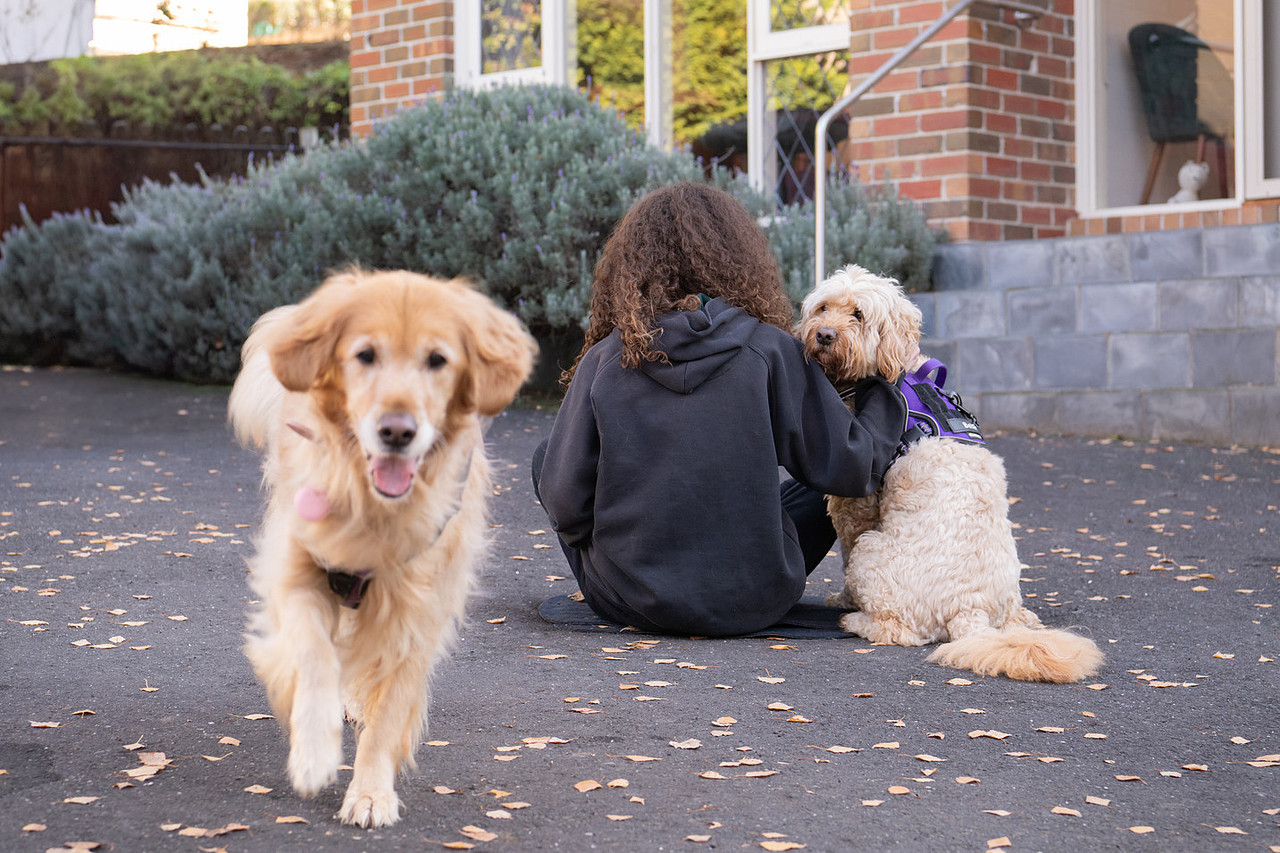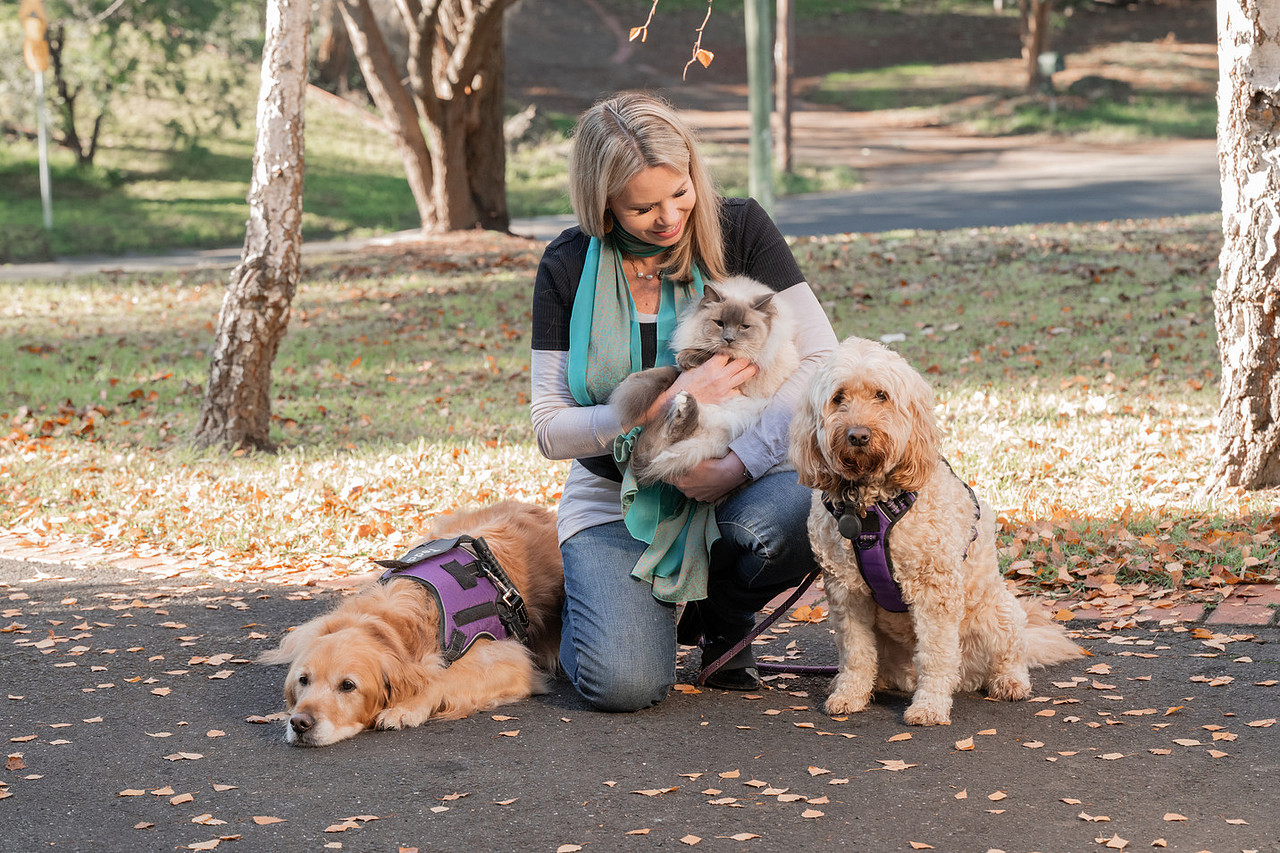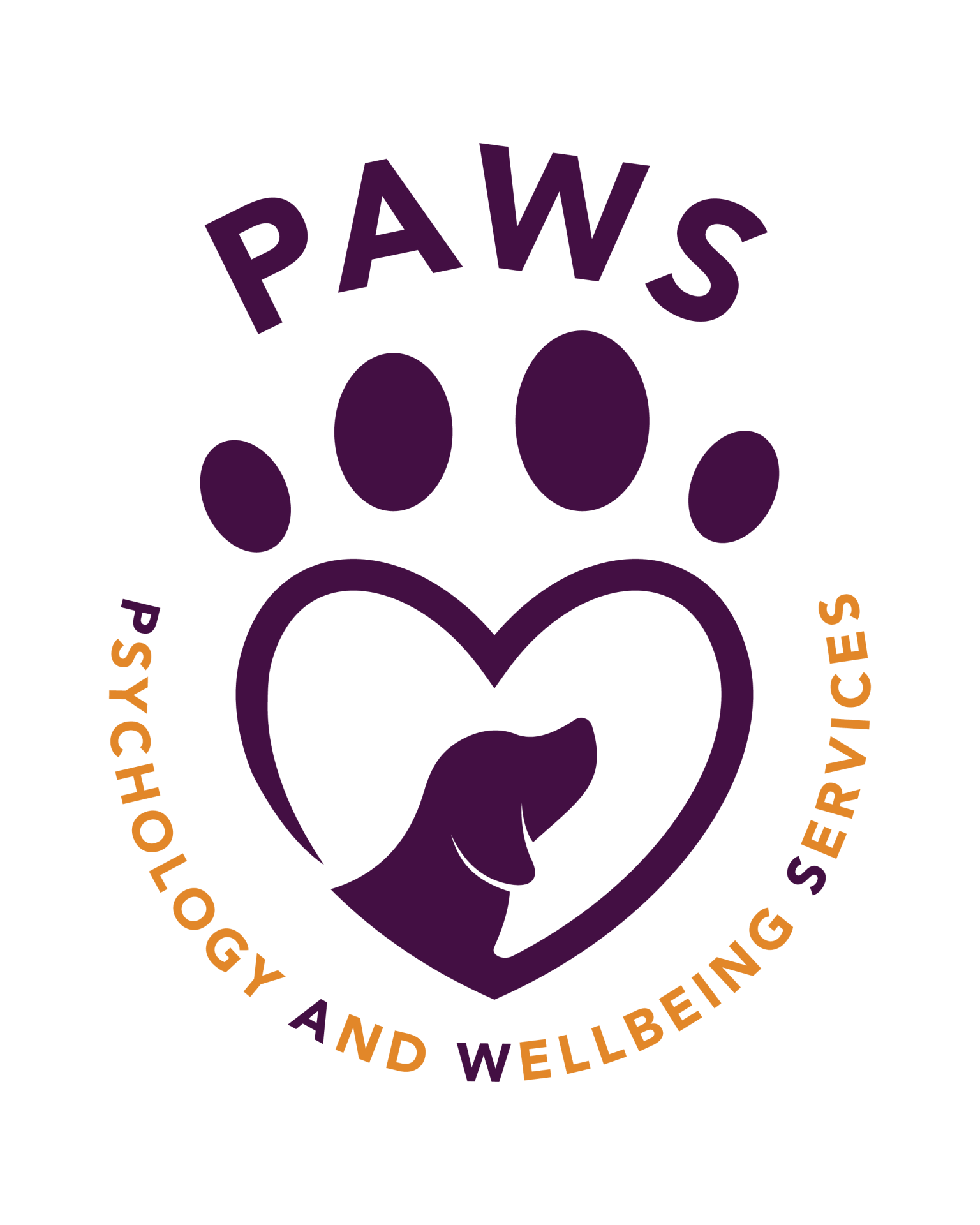Animal Assisted Therapy (AAT)
The Benefits of Animal Assisted Therapy at PAWS Psychology
The thought of attending psychology sessions can potentially be a bit daunting for adults, children and any parents of children who will visit a psychologist. Incorporating therapy dogs facilitate a welcoming and calming environment. They are a wonderful way to engage children in sessions and to maximise the effectiveness of treatment outcomes. The clinic also has a large outdoor area that can be utilised for those clients who wish to enjoy playing and interacting with the dogs in an outdoor setting. The practice of using animals in sessions is referred to as Animal Assisted Therapy and is a well established evidence-based practice.
Therapy dogs can provide psychological or physiological therapy to individuals other than their owners. Unlike service dogs, therapy dogs are encouraged to interact with a variety of people and patting the pooches is highly encouraged! They are trained to be obedient, are very gentle with children, respond to a range of instructions and withstand noise or boisterous movements.

Teddy & Bella - Therapy Dogs
The role of therapy dogs is to react and respond to people and their environment, under the guidance and direction of their owner who is usually the trained handler of the therapy dog (e.g., Robyn). Robyn has two dogs that she owns and works with who are both a breed of Groodle (Groodles are bred from a Golden Retriever and a Poodle). Groodles are regarded as one of the best breeds for a therapy dog and Robyn chose them intentionally for this reason. Bella is 6 years old and is non hair shedding and hypoallergenic. Teddy is 5 years old, a little larger than Bella, looks almost identical to a Golden retriever and does shed a little bit of fur, but not the same amount as a full breed Golden Retriever. Both dogs are medium sized dogs.
Therapy dogs can provide psychological or physiological therapy to individuals other than their owners. Unlike service dogs, therapy dogs are encouraged to interact with a variety of people and patting the pooches is highly encouraged! They are trained to be obedient, are very gentle with children, respond to a range of instructions and withstand noise or boisterous movements.
The human-animal bond that occurs between an individual and a therapy dog can elicit many positive outcomes, notably, increasing the attachment response that triggers the hormone oxytocin, which increases trust in humans. In addition, research has shown therapy dogs can help reduce stress. Most children respond really well to having a therapy dog in sessions and tend to feel more comfortable opening up and engaging in therapy sessions, as well as enjoying their time spent with the dog, especially if they are feeling upset in any way. Their unconditional love, affection and focus on the child is rewarding to watch and it is so positive to see withdrawn children begin to relax and enjoy being with the dog. For those children who have a fear of dogs, we also provide dog phobia sessions and have had many successful outcomes doing this.

"I am very fortunate to have two amazing female dogs, Bella and Teddy, in my practice who are both gentle and affectionate Groodles that are trained therapy dogs. I have experienced the benefits that therapy dogs can offer to many clients, and especially to children who may be a little hesitant arriving to their first session. I include therapy dogs as part of my service to optimise engagement and to promote a friendly and more relaxed experience.
I incorporate the dogs into sessions as little or as much as may be wanted or useful. I love seeing the joy and the relationship that develops between clients with both Bella and Teddy. As you will have seen, my clinic name and logo is based around the theme of Bella and Teddy. I do hope you enjoy meeting them also and I look forward to sharing them with you."
Check out our ‘PAWS Animal Crew’ page with photos of Bella and Teddy and their best mates Cloud and Skye, the two clinic cats!
- Robyn
Animal Assisted Therapy Benefits
Reducing Stress and Promoting Relaxation
- Interaction with therapy dogs has been shown to reduce physiological stress (e.g., lowering cortisol levels).
- Petting animals triggers an automatic relaxation response and increases oxytocin, a hormone that fosters trust and bonding.
- Contact with animals can also boost serotonin and prolactin, which are linked to improved mood.
Enhancing the Therapeutic Process
- Animals can act as catalysts in therapy, helping to “break the ice” and reduce initial resistance.
- Their calming presence can quickly build rapport between therapist and client.
- Professionals can use client–animal interactions to provide insight into behaviour patterns and relationships.
Supporting Social and Emotional Development
- Encourages empathy and appropriate interpersonal skills.
- Helps individuals develop and practice social skills, including reading social cues.
- Promotes engagement and motivation in therapy, supporting participation in communication, play, and functional tasks.
- Provides comfort, reduces feelings of loneliness, and enhances overall wellbeing.
Encouraging Functional and Physical Skills
- Promotes self-care and activities of daily living.
- Supports development of fine motor skills, gross motor skills, and coordination.
Specific AAT Benefits and Applications for Clients with ADHD
Frequently Asked Questions
No. We have purposely chosen not to charge additional session fees for the use of therapy dogs and cats in sessions, because we believe that the therapeutic benefits should be available to all.
Yes. Both dogs have been trained with Lead the Way methodology. This training uses verbal commands and tonal influences. This training ensures that the dogs are well behaved, responsive to commands and can cope with active and noisy situations. Both dogs are extremely gentle, affectionate and playful as well as being best mates.
Bella and Teddy are regularly washed and groomed. In fact, both dogs are fortunate to receive frequent brushing from many clients during their sessions so are very well presented. A bathroom and hand sanitiser products are available for those who wish to use these.
The animals are available for almost all sessions but your choice of dog or cat may not be available at all times. They may occasionally be away at grooming or in need of their own wellbeing time. You can also choose not to have any animals in sessions if you prefer. They can be incorporated in sessions as much or as little as you feel comfortable with.
Yes, both dogs love to fetch and all games and interactions with the dogs are encouraged where appropriate to the session.
Yes. The clinic also has 2 cats named Cloud and Skye. Whilst Cloud is a family pet and loves to greet and welcome clients, Skye is a ragdoll breed who has intentionally been introduced as a kitten to clients. The ragdoll breed of cat will often enjoy cuddles more than some other breeds may. Skye is also less likely to shed as much as most other cat breeds and she loves playing with toys.
Like Cloud, Skye also loves and enjoys the company of Bella and Teddy. Cloud is very curious and will often come to meet you and is usually very happy to have a pat, but is not so keen on being picked up. She will sometimes lie down to invite you to give her a gentle pat and can usually be found enjoying a warm spot outside.
Yes. Both Bella and Teddy have been successfully used to help children and adults who have been dog phobic. A gradual exposure methodology is used.
Yes. I have Insurance that covers both dogs as well as professional Indemnity and public liability.
